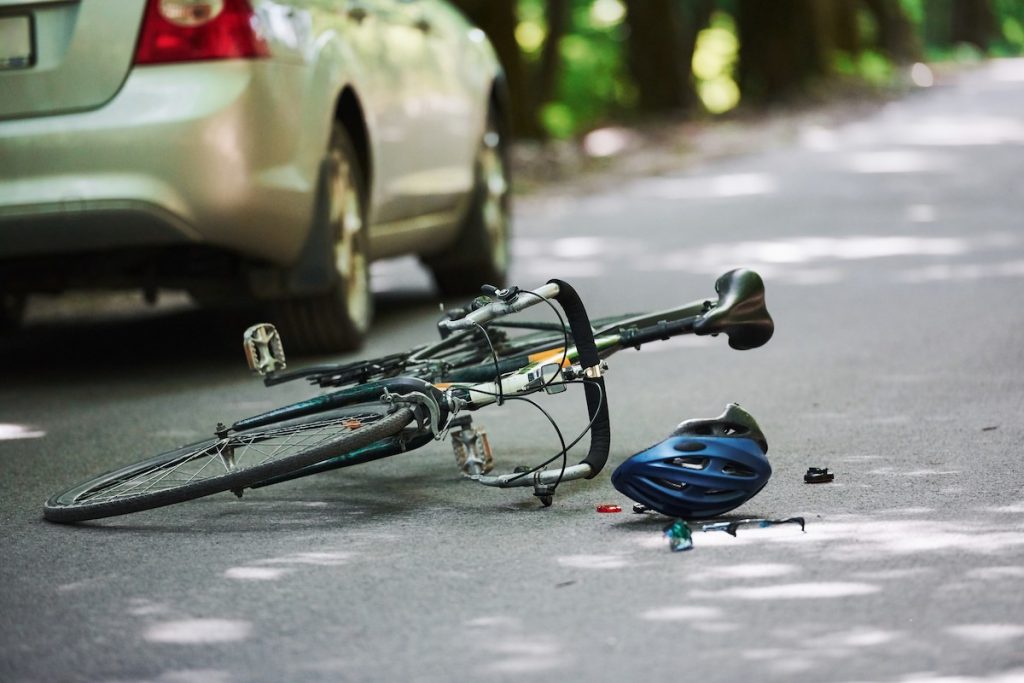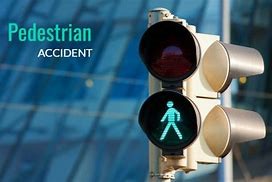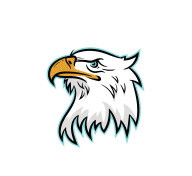Defending Your Rights, Protecting Your Freedom
Pedestrian Bicycle Accidents
Colorado is full of active people who walk or bike in our great state. Vehicle vs. pedestrian or bicycle never has a good outcome and are the types of personal injury cases that usually involve severe injuries.

BICYCLE ACCIDENTS
Common Causes of Bicycle Accidents
Cycling is a popular mode of transportation and recreation enjoyed by millions of people worldwide. However, like any other form of travel, bicycle accidents can occur, leading to injuries and even fatalities. Understanding the laws, causes and injuries that one may sustain in a bicycle accident is crucial if you are injured due to someone else’s negligence.
Beck Law can help you through the complex legal process and get you the best outcome you can get. You need the best bicycle accident attorney in Colorado to get you the compensation you deserve.
Cyclists have the right to use public roads and must follow all the rules and signs as if they were motor vehicles. Colorado law, C.R.S. 42-4-1412(1) defines a bicyclists’ responsibilities.
Some key laws you need to know in Colorado regarding bicycles include:
- Three-Foot Passing Law: Drivers must give cyclists at least three feet of space when passing. Many accidents occur because motorists fail to provide this critical buffer.
- Right to the Road: Cyclists are allowed to ride in traffic lanes, and in certain situations, they can even take the full lane for safety.
- Helmet Recommendations: Although Colorado does not require helmets for adult cyclists, wearing one can significantly reduce the severity of injuries during a crash. It can also lower your responsibility for any head injuries you may sustain in an accident.
- Cyclists must ride reasonably close to the right curb: A cyclist is required to ride as close as practicable to the right-hand curb or edge of the road. They can also ride on the paved right shoulder when it is available. But there are five (5) exceptions where a cyclist need not ride as close to the right-hand curb or edge of the road as practicable:
- When passing another bicycle or vehicle proceeding in the same direction
- When preparing to turn left
- When conditions make the right-hand edge of the roadway unsafe or unreasonably unsafe for bicycle users, including, but not limited to:
- Surface hazards (i.e., ruts in the pavement or potholes);
- An uneven roadway surface
- Drain openings
- Debris
- Parked or moving vehicles or bicycles
- Pedestrians
- Other obstacles; or
- The lane is too narrow to permit a vehicle to safely overtake and pass a bicycle.
- When operating a bicycle in a lane in which traffic is turning right, but the cyclist intends to proceed straight through the intersection; and
- When riding on a one-way highway or street that has two (2) or more lanes. In this situation, the cyclist may also ride as close to the left curb or edge of the roadway as practicable.
- Restrictions on Riding 2 cyclists: Cyclists can ride two (2) bicycles abreast, so long as they do not impede or disrupt the normal flow of traffic.
- Lights: If riding between sunset and sunrise, a cyclist must use lights. The light MUST include a white light that is visible from five hundred (500) feet to the front and a red reflector on the rear that is visible from all distances from one hundred (100) feet to six hundred (600) feet when directly in front of lawful low beam headlights.
- Use of Hand Signals: A cyclist is required to signal to turn or stop for 100 feet. The hand signals are as follows: a left turn by extending his/her left hand and arm horizontally; a right turn by extending his/her left hand and arm upward, or by extending his/her right hand and arm horizontally; a stop or decrease in speed by extending his/her hand and arm downward.
These laws, alongside local ordinances, play a crucial role in determining liability in bicycle accident cases.
At Beck Law, we aggressively represent our clients and take action. These steps may include:
- Investigation: We investigate the facts of your accident, gathering evidence, obtaining police reports, and identifying witnesses.
- Insurance Companies: You never have to speak to insurance adjusters. We are experienced in their policies to lowball your claims.
- Litigation: If a fair and just offer is not given, we take the case to trial to fight for you.
- Medical Treatment: We make sure you get the medical treatment you need whether you have health insurance or not.
Most Common Reasons for Bicycle Accidents
Distracted Driving
Distracted driving refers to any activity that diverts attention from driving, including talking or texting on your phone, eating, talking to people in your vehicle, or adjusting entertainment or navigation systems. People do not always pay attention to what is in front of them.
Right Crossing
A right crossing accident can occur due to any of the following scenarios:
- When a vehicle moves out of an alleyway, driveway, or parking lot and exits to the cyclist’s right. The driver collides with the cyclist when the latter passes the car’s front side
- When a vehicle pulls out far enough at the last second to block the cyclist’s right of way. This makes it impossible for the cyclist to avoid a collision with the right side of the vehicle.
Right Hooking
These are the most common causes of right-hooking accidents:
- When a car hits a cyclist when the latter is in front of a cross street. The collision was the result of the driver failing to see the cyclist when making a right turn.
- When a motor vehicle driver goes past a cyclist and blocks the latter’s way while making a right turn. The cyclist collides with the side of the vehicle.
Rear-end Collisions
Rear-end collisions occur when a motor vehicle collides with another vehicle in front of it. These types of crashes usually happen due to distracted driving and tailgating. Moreover, rear-end collisions are the most common way for drunk drivers to potentially injure or kill cyclists.
Other Causes of Bicycle Accidents
Aside from the above-mentioned causes, bike-related accidents can also occur due to the following factors:
- Dooring accidents or “door prize” collisions
- Junction or lane merging
- Unfavorable weather conditions
- Left cross accidents
- DUI
- Failure to Yield Right of Way
- Speeding
FREQUENTLY ASKED QUESTIONS
When do I file a Bicycle Accident lawsuit?
The statute of limitations is 2 years from the date of the accident. If you do not file a claim within this time limit, you lose your right to do so later. Depending on your injuries and liability, a lawsuit can take months or even years to resolve.
How do you determine fault for a bicycle accident in Colorado?
Determining fault in a bicycle accident requires a comprehensive understanding of the incident and its surrounding circumstances. Fault can be attributed to various parties involved, including the cyclist, other motorists, pedestrians, and even government entities responsible for maintaining bike paths and street signs.
What are some common bicycle accident Injuries?
When a bicycle is hit by a car, it can leave the cyclist with costly, debilitating injuries. Injuries can range from:
- Head trauma, concussive injuries, and traumatic brain injuries (TBI)
- Spinal cord injuries such as paraplegia, quadriplegia, and paralysis
- Neck and back injuries
- Lacerations and multiple bone fractures
- Amputation injuries and loss of limb
What damages can I claim?
You can claim both economic and non-economic damages.
If you have been injured in a bicycle accident, the cost of your recovery can be expensive. You need Beck Law to guide you through the legal process and get you the compensation you deserve.

PEDESTRIAN ACCIDENT
While there are any number of reasons a car or other motor vehicle could injure a pedestrian, there are some common causes.
Careless and negligent motorists often cause pedestrian accidents by:
- Failing to stop at unmarked crosswalks
- Using alcohol
- Distracted driving either by texting or using the phone
- Failing to observe traffic laws
- Making an improper or hasty turn
- Failing to use appropriate headlights at night
Pedestrian accidents are, unfortunately, common types of personal injury cases. These accidents occur when a pedestrian is struck by a vehicle, often leading to serious or even fatal injuries. The law generally requires drivers to exercise reasonable care, and if they fail to do so and a pedestrian is injured, they may be held liable for damages.
Most Common Injuries Sustained from Pedestrian Accidents:
Below are just some of the injuries pedestrians sustain. They suffer more serious injuries because they are usually not wearing protection.
- Head injuries
- Skeletal injuries
- Broken lower extremities
- Knee injuries
- Hip injuries
- Abdominal and internal injuries
If you are injured as a pedestrian in Colorado, you need an attorney who is experienced in the laws of pedestrian accidents. You need to contact Beck Law.
What do I do if I am in a pedestrian accident?
- Get medical treatment: The first thing you MUST do is to get the treatment you need. Not only is this necessary for your health but it also creates a medical record of your injuries. This record can be used as evidence during a settlement case.
- Don’t speak to an insurance company: It won’t be long until insurance companies start calling to offer compensation. Do not settle for any amount of money until you talk to an attorney with experience in bicycle accidents.
- Document, Document, Document: Not every injury is noticeable. Minor aches and pains, mobility issues, and even mental health problems can develop slowly over time. Keep a journal of how these injuries affect your everyday duties and talk to your doctor to make a record of the accident’s impacts and a detailed recovery plan.
- Do not use social media. Insurance adjusters seek out information to try and prove you were not injured. Sometimes, people do not think about these things when posting on social media, such as, ticktock, Facebook, Instagram etc.
What are the rules of Crosswalks?
Understanding the role of crosswalks in a Colorado pedestrian accident case is crucial for anyone involved in such incidents.
Important Factors include:
- Right of Way: Colorado law typically gives pedestrians the right of way in marked crosswalks. If a driver fails to yield, they may be liable for the accident.
- Crosswalk Visibility: Poorly marked or obscured crosswalks can contribute to accidents. Our pedestrian accident attorneys can assess whether the crosswalk met safety standards.
- Driver and Pedestrian Behavior: Both parties must exercise care. A pedestrian accident lawyer can help determine if negligence, such as distracted driving or jaywalking, played a role.
- Evidence Collection: Gathering evidence like traffic camera footage and eyewitness accounts is vital. An attorney can use this information to build a strong case.
- Shared Fault: Colorado follows a modified comparative negligence rule, meaning a pedestrian can still recover damages if they are less than 50% at fault.
If you’ve been involved in an accident, consulting with a pedestrian accident lawyer can help you navigate the complexities of your case and pursue the compensation you deserve.
What types of compensation can I seek after a pedestrian accident?
You can recover both economic and non-economic damages.
